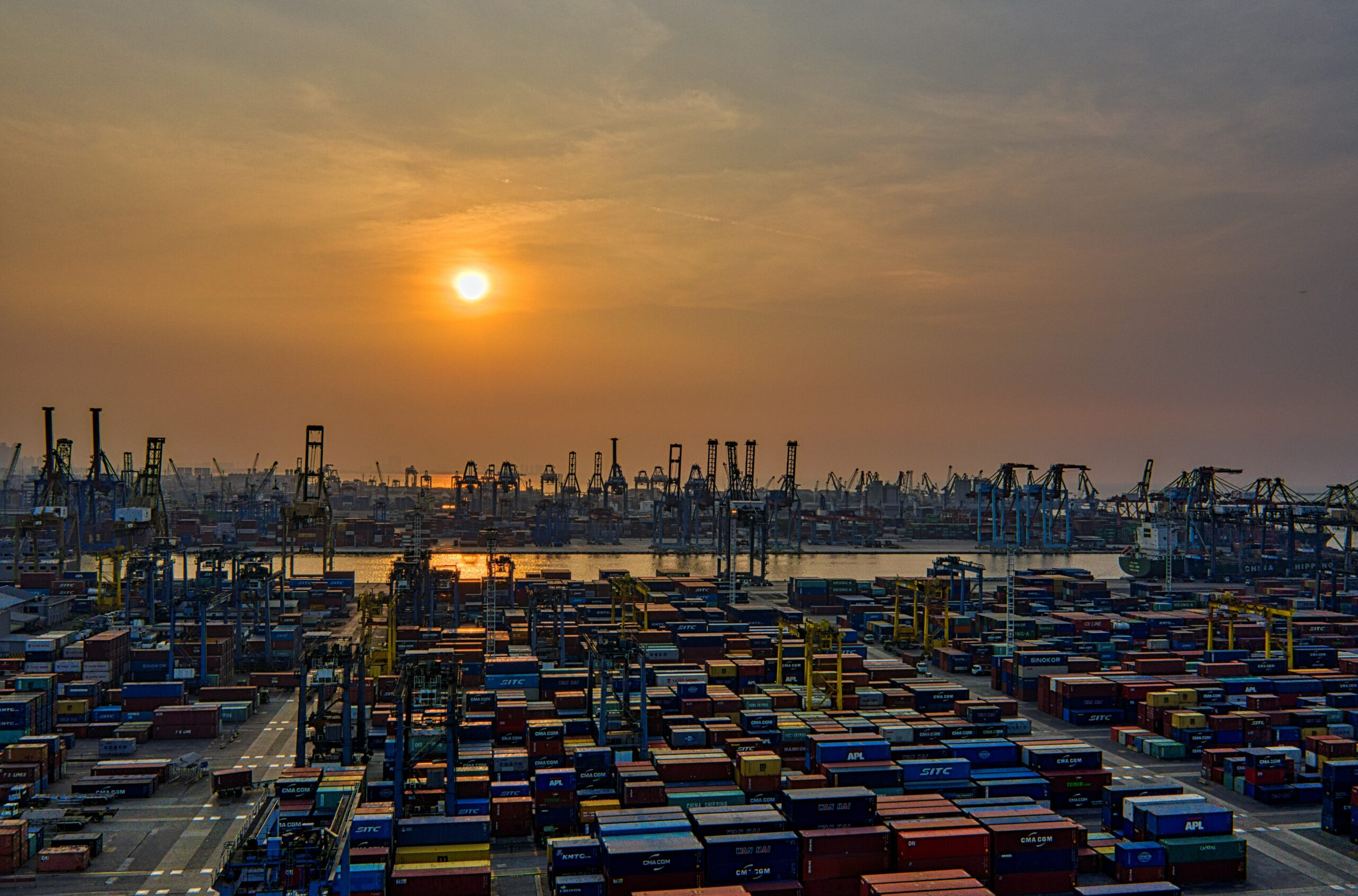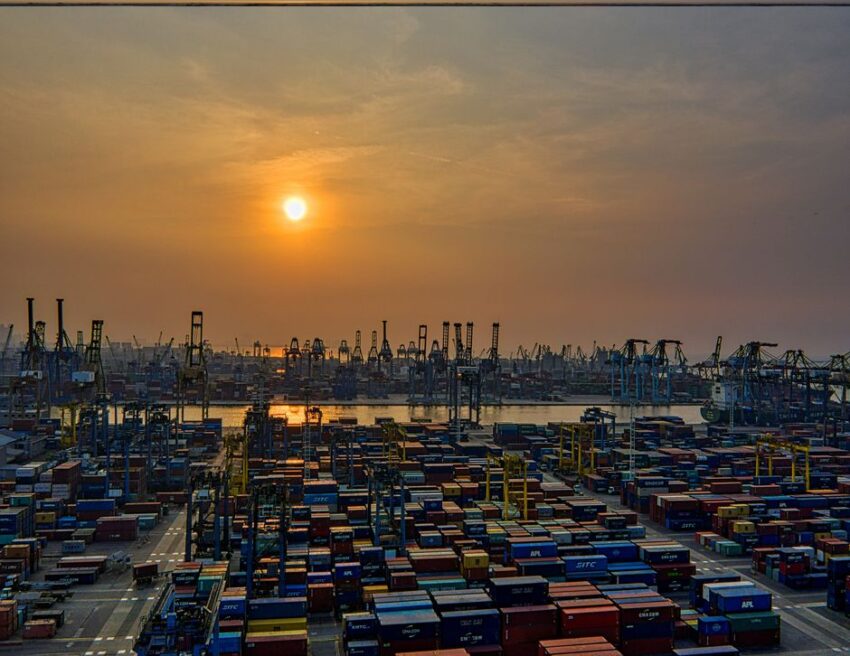
Port congestion, a persistent problem in maritime logistics, continues to plague the ocean freight shipping industry to this day. However, it is important to understand the causes, the affected parties, and the strategies for safeguarding your business during such circumstances. In this blog, we are going to unravel the reasons behind port congestion and provide some tips for independent freight forwarders to tackle this problem.
Port congestion in the ocean freight shipping industry
Port congestion arises when a vessel reaches a port for cargo handling but is unable to dock, compelling it to wait at the anchorage. This situation commonly arises when a port or terminal becomes overburdened, incapable to accommodate the influx of incoming vessels. Consequently, when a vessel arrives, only to find the terminal unavailable, it must join a queue and await the next available berth. This perpetual frustration experienced by ship operators has a negative impact on the ocean freight shipping industry at large.
The far-reaching implications of port congestion directly affect the management of supply chains. Faced with port congestion, certain carriers opt for rerouting, thereby bypassing crucial stops. In shipping terminology, this is commonly referred to as “blank sailing.” Port congestion, coupled with labour crises across various industries, has the capacity to exacerbate the collapse of global supply chains. Moreover, carriers often operate on strict schedules, and port congestion tends to disrupt their carefully crafted timetables. As a result, shipment deliveries suffer delays, resulting in increased costs and extended shipping times.
Reasons leading to port congestion in the container shipping sector
Lack of infrastructure capacity
At times, the port’s infrastructure is unable to handle the high volume of containers being received due to the limited workforce, resources, space, and equipment available. This often results in port congestion.
Unforeseen events
There are certain uncontrollable factors such as adverse weather conditions, theft, and accidents that can result in delays and congestion in the port operations. For instance, unpredictable weather phenomena, such as ice formations during winter, can impede vessel movement thus contributing to congestion.
Labour shortage
The tasks of towing, pilotage, and clearing ships require a sufficient workforce. However, the port may face a shortage of workers due to industry attrition caused by low wages and other issues. Strikes of the workers demanding better pay further disrupt the normal functioning of the ports thus leading to port congestion.
Surge in spending patterns of consumer
The long-lasting effects of the pandemic have led to an increase in online orders. This ongoing e-commerce boom has created a higher demand for shipments, resulting in potential terminal backups.
Customs clearance procedure
Stringent customs clearance requirements result in limited approvals, which reduces productivity and leads to delays in the flow of goods.
Equipment shortage
As the number of ships seeking berth space increases, the demand for loading and unloading equipment rises. However, ports may struggle to meet this demand consistently, leading to congestion issues.
Steps logistics companies can take to handle the problem of port congestion
In this constantly evolving world of international shipping uncertainties, one thing remains clear: the issue of congestion is here to stay for the foreseeable future. As a transportation and logistics service provider, it falls upon you to adopt a creative approach to delivering your cargo as close to the scheduled time as possible. Alternatively, you can continue informing your customers that the exact arrival time of their cargo remains uncertain.
Plan ahead
By planning ahead, you significantly enhance your chances of a favourable outcome. For instance, it is advisable to ensure that all your international shipping documents are in order well before the vessel arrives at the destination port. This proactive approach enables you to expedite customs clearance through an “express release” process.
Consequently, your cargo may be released even before it physically reaches the port. Additionally, prior to the discharge of your cargo, it is beneficial to schedule a pre-appointment with the port to secure a designated space for storage. This prevents the need to search for available space within an already congested port.
While this solution may not be flawless, considering the existing congestion challenges, it represents a positive step toward ensuring the timely departure of your cargo from the port as desired.
Make use of SOC containers
When you decide to store your cargo in a container without an immediate pickup, it is crucial to be aware of the deadline for your last “free day.” Obtaining this information from your ocean carrier, or terminal is therefore essential. To minimize expenses and avoid being financially burdened by demurrage and detention charges, opting for a shipper-owned container (SOC) is a viable strategy. If you have a good understanding of the industry, you’ll recognize that choosing an SOC container grants you greater control and autonomy over your shipment.
So, what does this mean for you? Simply put, even in the event of congested ports, you can bypass the demurrage and detention charges. With an SOC container, you have the freedom to manage the container according to your own schedule, eliminating the added pressure to return it on time and consequently avoiding any demurrage and detention costs.
Consider rerouting options
We are well aware that there are multiple routes available to travel from point A to point B. While some routes may be quicker than others, the presence of alternative options allows for flexibility. However, if opting for the faster route entails getting stuck in traffic or encountering significant road construction, it is always wiser to consider an alternate path. Even if it might result in a longer inland transit, the advantage lies in reducing the risk of your cargo remaining on a vessel outside the port.


